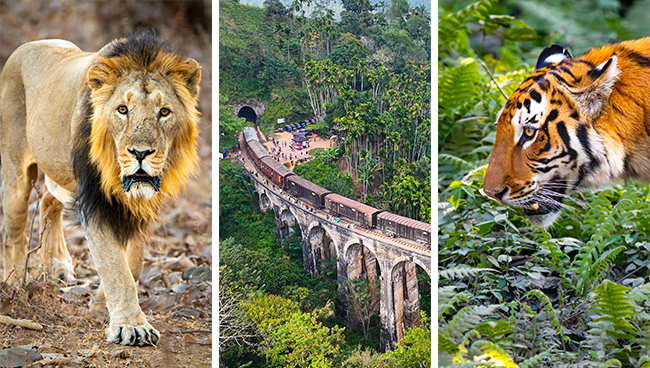
“Lions and Tigers and B…” Oh my – I always thought that line from The Wizard of Oz was about as geographically nonsensical as penguins and polar bears – yet in February this year I found myself staring intently through a bamboo thicket in India, waiting for the impossible trifecta. I could see fresh tracks crossing the sandy trail just ahead of our disconcertingly open safari jeep. We’d already ticked off Tiger. These tracks were different. The claws were bigger. Suddenly, I heard a crunching sound to my left – like someone biting into a perfectly-cooked papadum – and there it was: A shaggy black mass, lumbering towards us behind the branches. “It’s coming into the open!” My photo tour guests trained their lenses where I was pointing, unsure what they were about to see. Then, like Baloo from The Jungle Book (which was set in this very part of India), a huge, sleepy-looking bear slowly swaggered out onto the road. A sloth bear! Click!
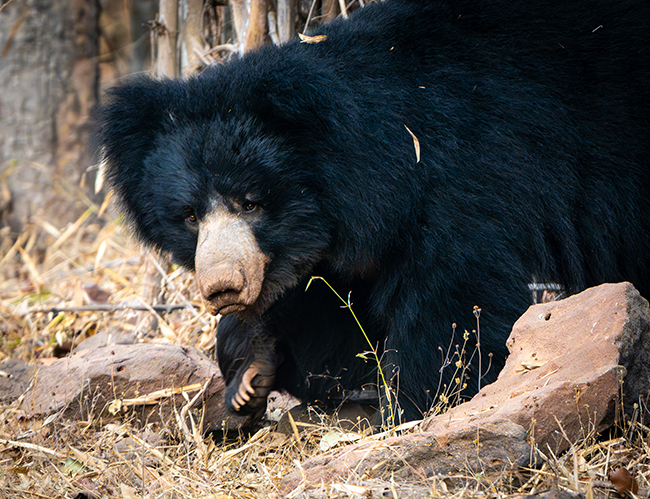
The light was beautifully soft but fading, so even at my smallest f/2.8 on my new, super-sharp Leica 200mm f/2.8 prime lens with a 1.4x teleconverter on (which pushed the minimum f/# to f/4), to get 1/800th sec (just enough shutter speed to hopefully freeze a bumbling bear), my AutoISO climbed to 3200. These days that’s no biggie, not only does the LUMIX G9II’s high-gain sensor handle that without much speckly noise, AI tools do an insane job at removing ISO noise anyway, as you can see. Finally, a decent shot of this elusive, lethargic-looking beast! Dorothy and The Tin Man were right to be worried though: At 1m high at the shoulders and weighing more than 100 kg, apparently if I’d channeled by inner Mowgli and stepped out the vehicle for a clearer photo, this killer-Ewok would likely have run right through me, faster than a hot Indian curry. They kill about a dozen people each year – the bears, that is, although many of the curries were to die for too, especially in Sri Lanka where the tour starts.
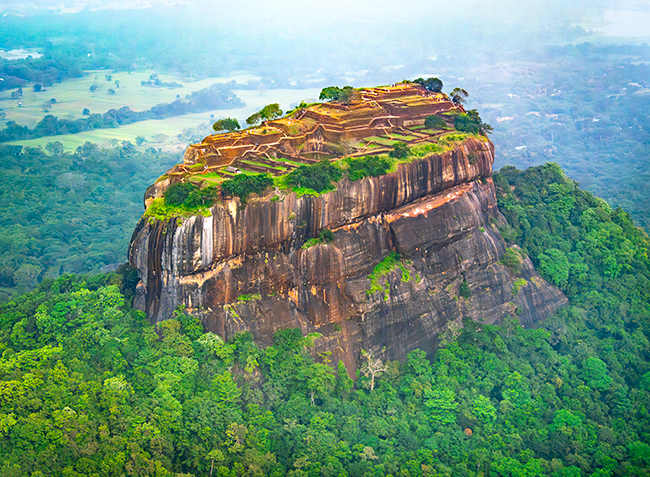
Formerly ‘Ceylon’, this vibrantly photogenic island nation hangs below India like one of the teabags its name is still famous for, and like India, is also home to ever-fewer sloth bears (less than 1000 of the world’s 17,000), along with leopards, Asian elephants, and literally 1,416,000,000 less humans. Still, the latter two often don’t get along, and human-elephant conflict remains a pressing issue in Sri Lanka. We happily saw many relaxing in the national parks, but also several wandering busy roads at night and stealing food from trucks. Rickety wooden watch towers teetered over every rice field, farmers ready to defend their crops at night. Deliberately killing an elephant now carries the death penalty, yet on average, one elephant dies in Sri Lanka every single day from human-related conflict. Awareness is important, attitudes are changing, and we make a point of supporting a local elephant orphanage and wildlife vet, donating over $1,500 in desperately needed medical supplies including surgical lamps, trolley tables, ventilators, syringes and antibiotics.
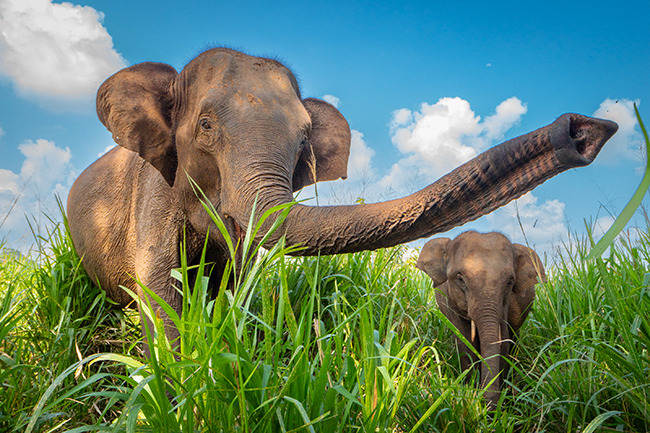
I’ve photographed plenty of African elephants (this September will be my 26th photo tour to Kenya!) so it’s fascinating to see the differences of this species, beyond their smaller ears: Tusks are only present on some males (and never females) and while African trunks end in a pair of ‘fingers’, these schnozzes end in just one, as you can see! To get this shot of mum and calf (f/6.3 @ 1/640th sec, ISO1000 with my Leica 8-18mm lens zoomed out to 9mm, 18mm effective) I lowered my camera down to near ground-level from the jeep using a monopod, with the LCD screen tilted up so I could see what was in shot, remote connected and focus smugly set to detect not just the elephant but it’s eye, I was able to concentrate on composition and pressing the button at the right moment, as mum wandered over and flicked her trunk out to investigate my setup. I love this shot, and the memory it recalls for me of the fun I had taking it.
Despite having run wildlife photo tours around the world for 15 years, not only is every wildlife encounter unique, but newer cameras and lenses are forever re-energising me with the exciting chance for not just capturing higher quality photos, but new features unlock creative new possibilities! Using the LUMIX G9II’s pre-burst for example, on this trip I finally overcame the limitation of my sluggish human reflexes to capture an Indian roller returning to her perch – colourful wings stretched wide – before I even realised she was back in shot!
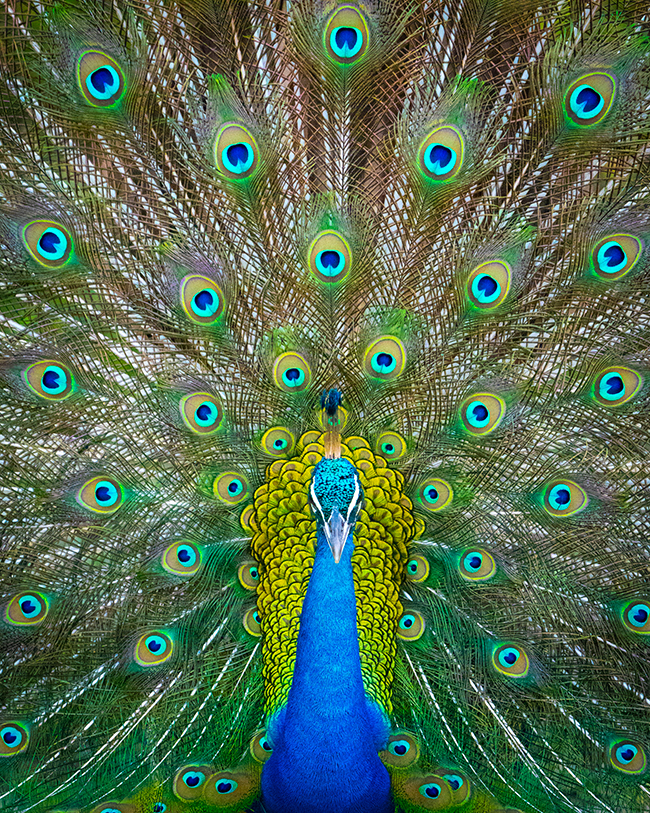
Similarly, I was loaned the beautiful Leica 200mm f/2.8 lens for this trip – a prime lens (ie it doesn’t zoom in or out) which I usually find annoyingly restrictive. However, I soon found myself using almost nothing else. Not only was this lens giving me sharper photos than I thought possible and the f/2.8 producing sublimely soft backgrounds and faster shutter speeds in low light, but I was actually enjoying the challenge (and results) of having to find new, wider shots featuring more habitat when I’d usually have zoomed in, and tighter compositions when animals came too close and I couldn’t zoom out. In fact, one of my favourite photos from this trip is actually this one of a wild a peacock that annoyingly started displaying too close and I couldn’t fit it all in! Can you believe this is ISO6,400?
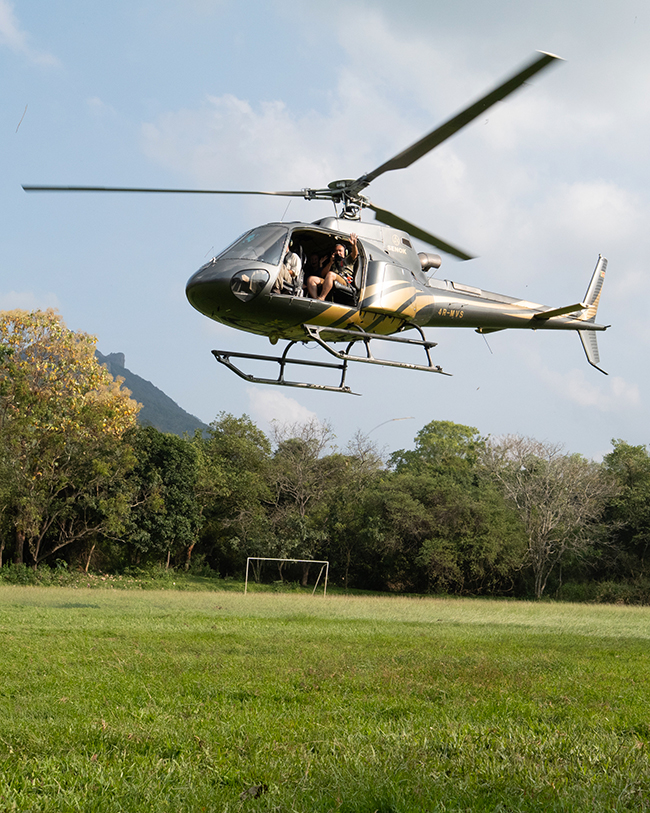
There’s more to photograph in Sri Lanka than just wildlife: We all know landscapes are boring, but photographing them from a helicopter with the doors taken off and everything vibrating and blustering around so much that you need at least 1/2500th sec shutter speed to prevent camera-shake sure puts the fun back in, especially when you’re orbiting a scene reminiscent of an Indiana Jones film – Sigiria – an ancient palace fortress set atop a monolithic rock rising 200m above the steaming jungle! I also got everyone to brave a death-defying tuk-tuk ride to a remote, 9-arched railway bridge aesthetically spanning a lush green valley, just in time to not see the scheduled train that didn’t arc across. It did 15 minutes later though, sending us scampering back to our vantage points. Good times.
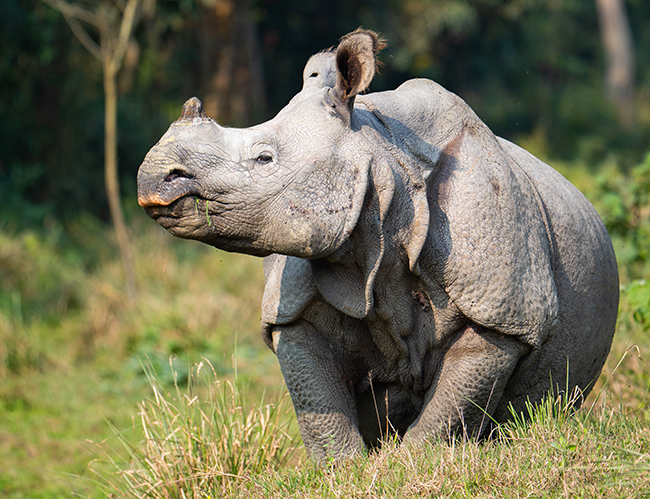
After two chaotic weeks of colour, curries and walking around sacred cows, I finished the tour in Delhi, privately endured the sunrise crowds at the admittedly spectacular Taj Mahal, then escaped to the far eastern side of India to rendezvous with my girlfriend Annabel for a ‘holiday’. This Assam region is famous for it’s tranquil tea fields and decadent high tea experiences, but being more of a coffee-drinker, I was’t here for that shit: I was here to seek out the legendary one-horned rhino. 80% of the global population of these armour-plated, fluffy-eared unicorn-tanks live in India, and of these, a precious 70% survive huddled in just one national park nearby, Kaziranga. Somewhat anticlimactically, we saw our first from the highway driving into town, and after breathlessly photographing it in the distance for an hour in the fading light at ISO a million, by next morning on safari, we’d already seen so many we’d lost count. Tick! Over the next few days, we enjoyed a tiger, an earthquake, and many kingfishers (the local beer).
Eventually however, a little voice on my shoulder whispered it was probably time to go home. I couldn’t hear it though, not above the relentless honking of tuk-tuk traffic and Tin Man on my other shoulder sneering that I still hadn’t ticked his trifecta. I needed lions to go with my tigers and bears. To Africa then? No! I’d heard of ‘Asiatic Lions’ before, but I hadn’t fully appreciated that they weren’t extinct. Yet, anyway.
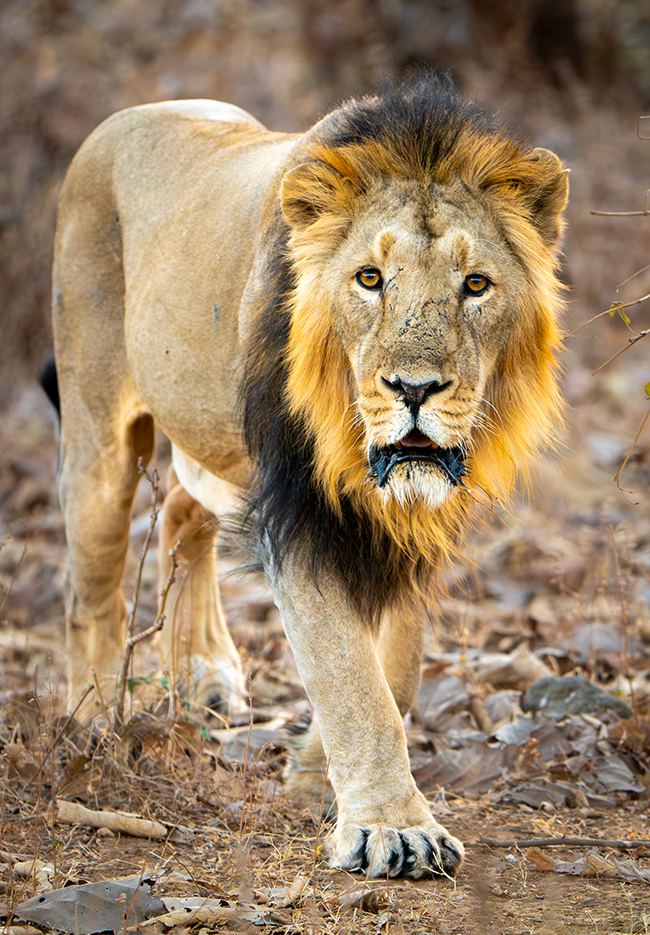
While this unique subspecies of lion with their weird belly-flap used to roam as far as Europe, it turns out the world’s entire population (just 891 individuals as of May 2025) exists now only in Gir National Park on the far western side of India, a mere 3,000 km, 300 street-cows and nearly 30 cups of masala chai from where we were in the east – but indeed, closer than Africa, despite taking longer to get to. If only Annabel had Dorothy’s magic teleporting ruby slippers – we could have just… sold them, and stayed photographing India’s wildlife even longer. We loved every bit of it, especially when we finally made it across, and a huge male lion wandered right past our little picnic breakfast on a hill overlooking a construction site, we weren’t even in the national park!
Lions and tigers and bears! Oh my! All in the one country!
Tick, Tick, Tick! Take that, Tin Man.
There is a lesson here: Is it that by finding and facing Tin Man’s trio of worst fears that perhaps he too could have come to love them? Don’t be ridiculous. Not only did Tin Man have no heart remember, he also didn’t have a safari vehicle to hide in. On foot his fears remain well-founded. For me however, having been lucky enough to meet these wizards of the wildness safely from the far side of a telephoto lens, if they could grant me three wishes, what would they be? I would ask for humans three things: the heart, the brains and the courage to prioritise wildlife protection. It will take all three.
There’s still a few spaces left to join LUMIX global ambassador Chris Bray on his next Sri Lanka & India photo tour next February, now with optional add-ons for rhinos, lions and the Taj Mahal! See www.ChrisBrayPhotography.com for details on this trip, or any of his other unforgettable wildlife photo tours around the world.
